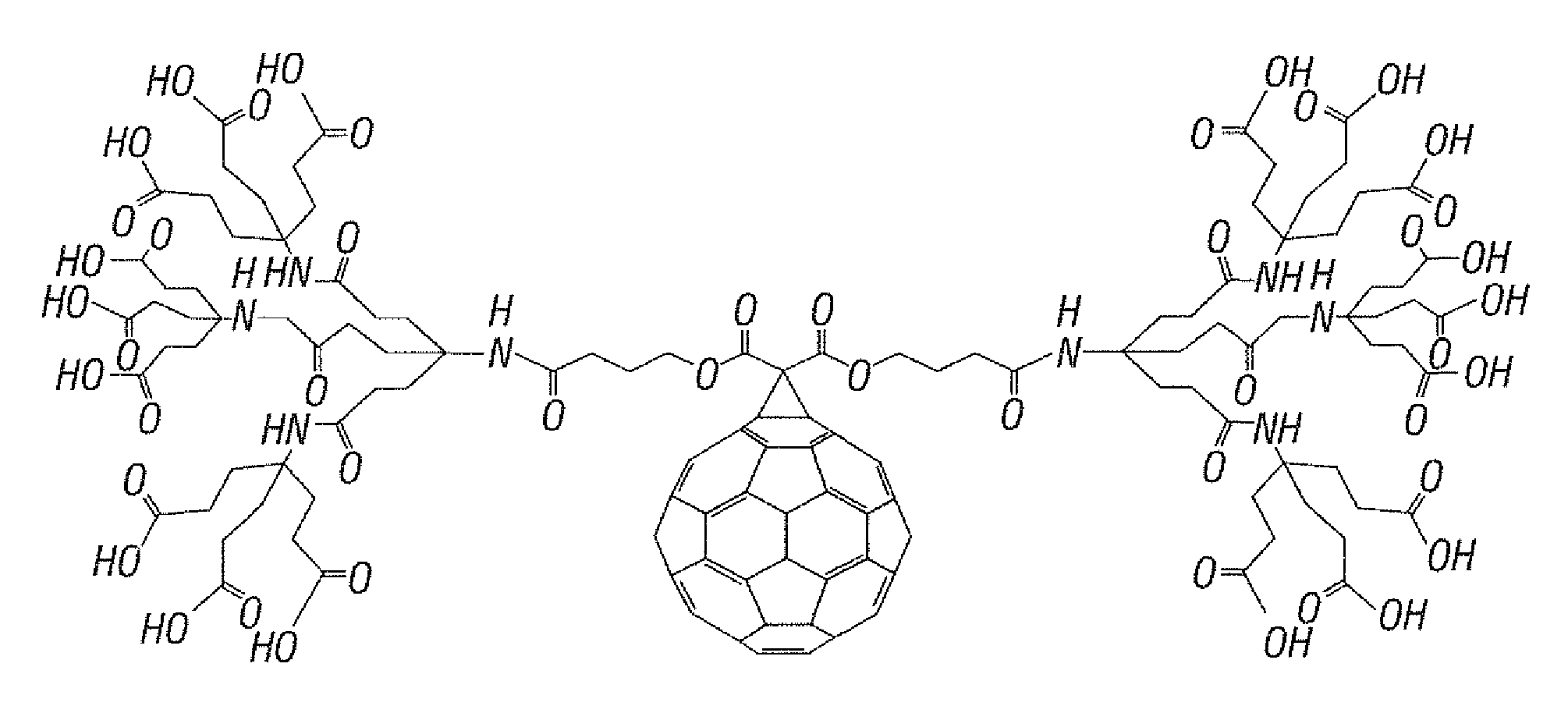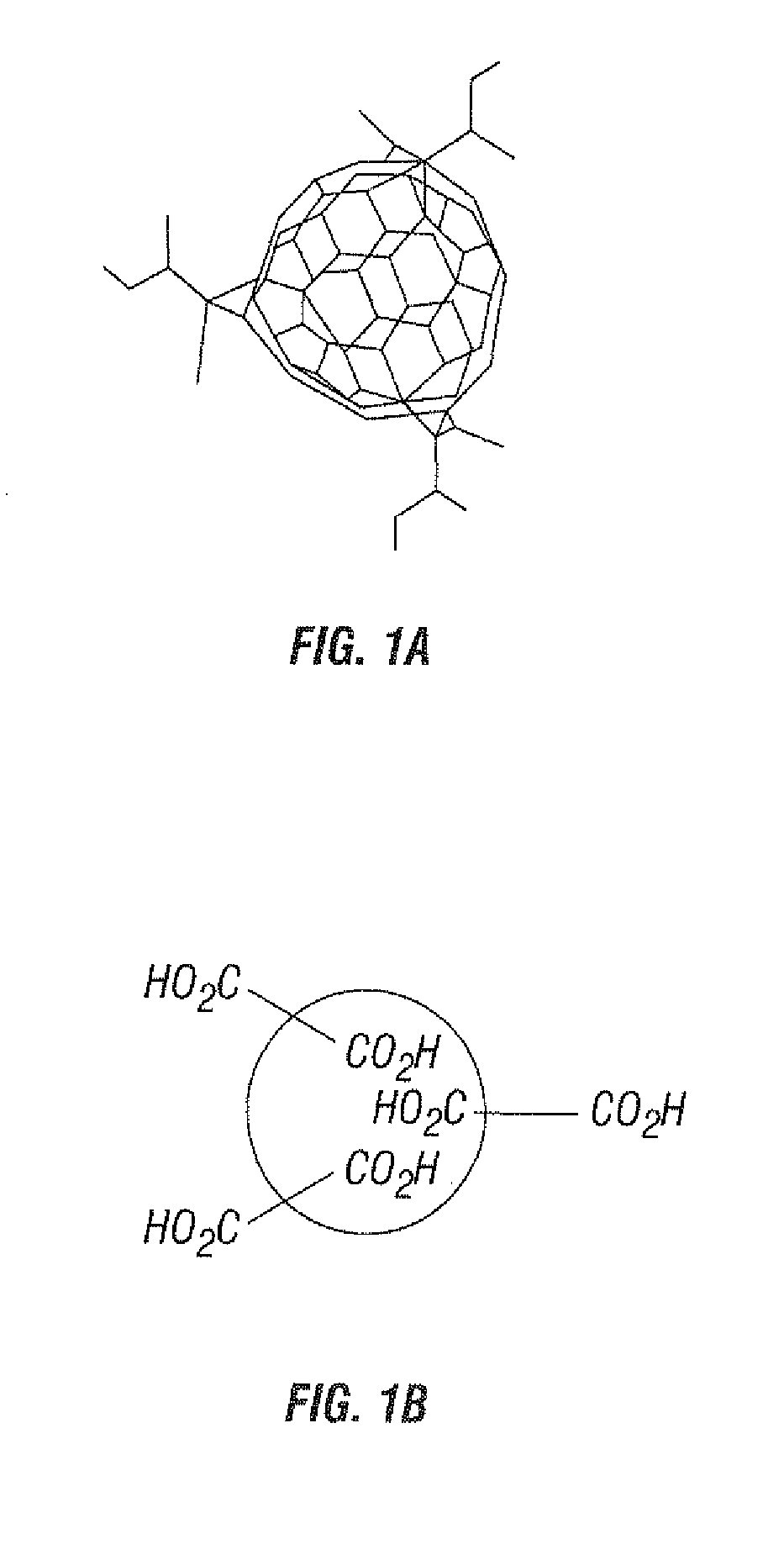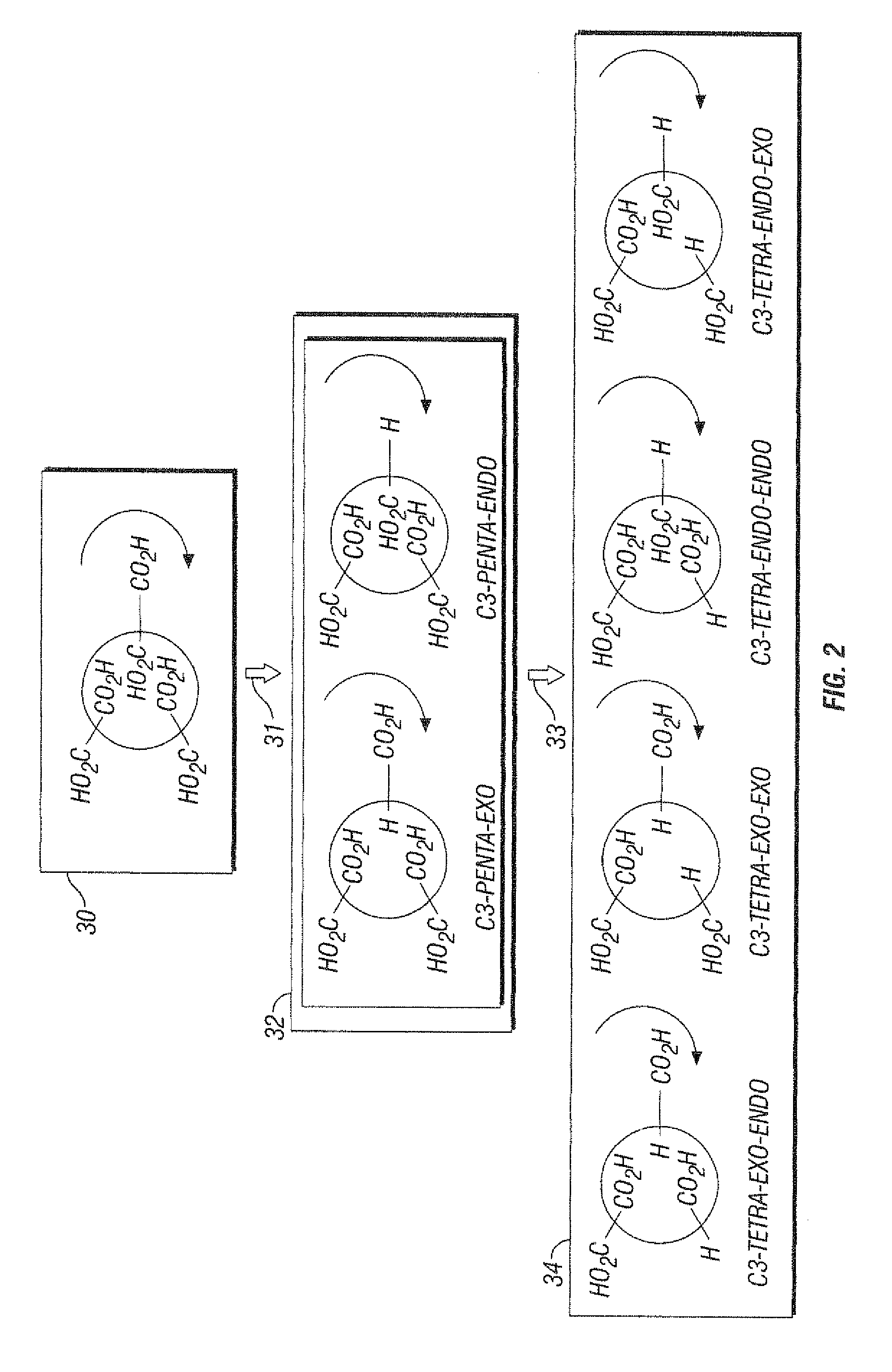Substituted Fullerenes and Their Use as Inhibitors of Cell Death
a technology of fullerene and substituted fullerene, which is applied in the field of substituted fullerene, can solve the problem that native fullerenes are generally only soluble in apolar organic solvents
- Summary
- Abstract
- Description
- Claims
- Application Information
AI Technical Summary
Benefits of technology
Problems solved by technology
Method used
Image
Examples
example 1
[0199]FIGS. 11A-11D show the ability of DF-1 to rescue cells challenged with doxorubicin, cisplatin, 5-fluorouracil, or TNF.
[0200]FIG. 11A shows the ability of DF-1 to rescue cells challenged with doxorubicin. In the absence of rescue, the doxorubicin LD50 was less than 0.1 μM. In contrast, rescue with 50 μM DF-1 raised the doxorubicin LD50 to about 10 μM. Further, rescue with 100 μM DF-1 essentially completely inhibited cell death induced by doxorubicin at doxorubicin concentrations up to 100 μM.
[0201]FIG. 11B shows the ability of DF-1 to rescue cells challenged with the known anticancer drug cisplatin (Cis-PT). In the absence of rescue, the cisplatin LD50 was less than 1 μM. In contrast, rescue with 50 μM DF-1 raised the cisplatin LD50 to about 10 μM. Further, rescue with 100 μM DF-1 raised the cisplatin LD50 to approximately 100 μM, as indicated by 60% survival at a cisplatin concentration of about 50 μM.
[0202]FIG. 11C shows the ability of DF-1 to rescue cells challenged with 5-f...
example 2
[0205]The experimental procedure of Example 1 was repeated, with the exception of substituted fullerene being C3.
[0206]FIG. 12 shows the ability of C3 to rescue cells challenged with cisplatin. In the absence of rescue, the cisplatin LD50 was about 20 μM. In contrast, rescue with 50 μM C3 improved cell survival to about 80% at a cisplatin concentration of 100 μM. Further, rescue with 100 μM C3 essentially completely inhibited cell death induced by cisplatin at cisplatin concentrations up to 100 μM.
[0207]In light of these results, we conclude C3 can be effective in inhibiting cell death from a commonly-used anticancer drug (cisplatin).
PUM
| Property | Measurement | Unit |
|---|---|---|
| aromatic | aaaaa | aaaaa |
| water solubility | aaaaa | aaaaa |
| structure | aaaaa | aaaaa |
Abstract
Description
Claims
Application Information
 Login to View More
Login to View More - R&D
- Intellectual Property
- Life Sciences
- Materials
- Tech Scout
- Unparalleled Data Quality
- Higher Quality Content
- 60% Fewer Hallucinations
Browse by: Latest US Patents, China's latest patents, Technical Efficacy Thesaurus, Application Domain, Technology Topic, Popular Technical Reports.
© 2025 PatSnap. All rights reserved.Legal|Privacy policy|Modern Slavery Act Transparency Statement|Sitemap|About US| Contact US: help@patsnap.com



